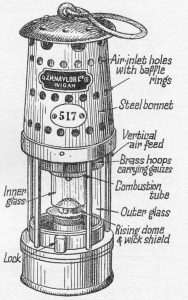Folks and Friends:
 Our old Sherman High School buddy “Drawdy Boy” (Norval Moore ’48) sent these very interesting pictures. (Best Pictures of the Year 2003.) One especially caught my attention because it is a unique close-up photo of a horsetail rush like those that use to grow along railroad embankments in Boone County, WV.
Our old Sherman High School buddy “Drawdy Boy” (Norval Moore ’48) sent these very interesting pictures. (Best Pictures of the Year 2003.) One especially caught my attention because it is a unique close-up photo of a horsetail rush like those that use to grow along railroad embankments in Boone County, WV.
They were also called “scouring rushes” because of their silica crystal grit that made them useful to pioneers and campers. It is thought to be a modern descendent of a coal age “tree” (Calamites) that left many of the fossils we used to pick up on “slate” dumps and along “red-dog” roads in coal camps (they were segmented like bamboo and had corduroy-like striations).
Some of the “kettle-bottoms” and “hogbacks” seen in the “slate” roofs of coal mines (we usually called darker shale, “slate”); they were very dangerous “deadfalls” that could drop suddenly without the warning signs usually noticed by experienced miners; especially the “fireboss” or a foreman who walked through the empty and quiet (except for an occasional rat fight) work sections between shifts; intensely listening for the creaks and groans from a “working roof” and complaining timbers (still adjusting from recent removal of the supporting coal seam); stopping frequently to tap a suspect ceiling with a small, vertically held, steel pry bar with a large ball-bearing welded on top; the “tap, tap, tap” must ring clear as a bell to his sensitive ear.
If the roof replies with a “dreamy” or hollow thud; he must make a life critical decision: to either initiate a fall by prying it loose (hopefully from an outer protruding edge); or marking it with a thick white chalk: “BAD ROOF”, to be taken down, or timbered up, by the next shift. His is a continuing, lonely, and tedious “talk with the mountain” that hangs over his head; as he clears each “entry and room” for the next section crew.

Davy Lamp Diagram
The foreman or “fireboss”, must also be eternally vigilant for methane gas accumulation along the ceiling — which in an earlier, less cautious time might be “flared off” — in the 1940s we used a Davy safety lamp whose small flame flared up to warn of methane; or flickered out when lowered to the floor to warn of the suffocating “black damp” (mostly carbon dioxide and water vapor) that could leak in from an old worked-out, unventilated mine.
Donald Reese Maxey
